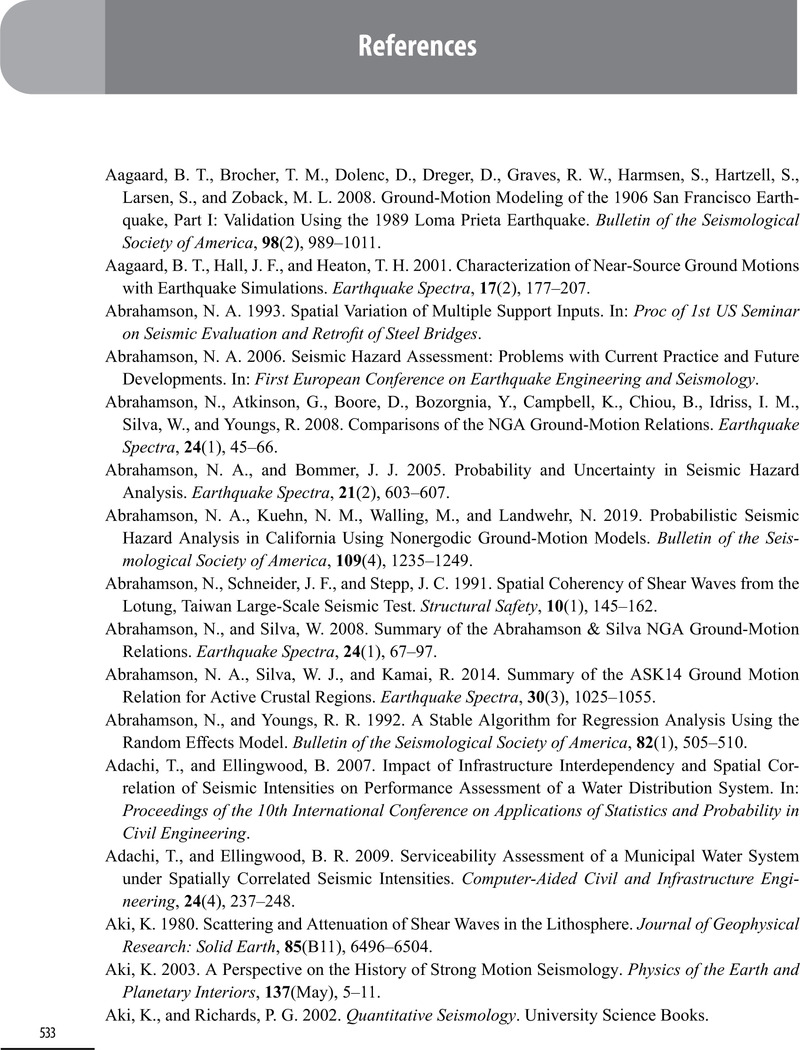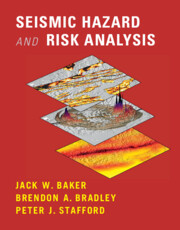Book contents
- Frontmatter
- Contents
- Preface
- 1 Introduction
- Part I Hazard Inputs
- 2 Seismic Source Characterization
- 3 Characterization of Earthquake Rates and Rupture Scenarios
- 4 Empirical Ground-Motion Characterization
- 5 Physics-Based Ground-Motion Characterization
- Part II Hazard Calculations
- 6 PSHA Calculation
- 7 PSHA Products
- 8 Non-Ergodic Hazard Analysis
- Part III Risk
- 9 Seismic Risk
- 10 Ground-Motion Selection
- 11 Spatially Distributed Systems
- 12 Validation
- Appendix A Basics of Probability
- Appendix B Basics of Statistics for Model Calibration
- References
- List of Symbols and Abbreviations
- Notation Conventions
- Index
- References
References
Published online by Cambridge University Press: 14 December 2021
- Frontmatter
- Contents
- Preface
- 1 Introduction
- Part I Hazard Inputs
- 2 Seismic Source Characterization
- 3 Characterization of Earthquake Rates and Rupture Scenarios
- 4 Empirical Ground-Motion Characterization
- 5 Physics-Based Ground-Motion Characterization
- Part II Hazard Calculations
- 6 PSHA Calculation
- 7 PSHA Products
- 8 Non-Ergodic Hazard Analysis
- Part III Risk
- 9 Seismic Risk
- 10 Ground-Motion Selection
- 11 Spatially Distributed Systems
- 12 Validation
- Appendix A Basics of Probability
- Appendix B Basics of Statistics for Model Calibration
- References
- List of Symbols and Abbreviations
- Notation Conventions
- Index
- References
Summary

- Type
- Chapter
- Information
- Seismic Hazard and Risk Analysis , pp. 533 - 571Publisher: Cambridge University PressPrint publication year: 2021



